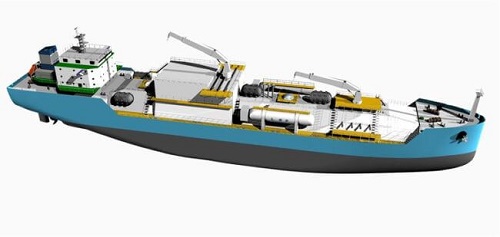GE Marine Gas Turbines Simplifies Onboard Maintenance And Repair

The easy-open casing design of GE’s LM2500 and LM6000 family of marine gas turbines simplifies onboard maintenance and repair that can save navies millions of dollars annually. Like an automobile hood, GE’s design uses specialized hinges and braces to allow the whole compressor casing to be easily opened. The low-pressure turbine also has a split casing design.
“To better understand how our unique split casing design has prevented hundreds of gas turbine removals from ships, GE reviewed historical maintenance and repair data from three naval customers,” said GE’s Brien Bolsinger, Vice President and General Manager. “We determined that thanks to GE’s easy-open split case design that allows for onboard intermediate level repair and maintenance, the United States Navy saved approximately $45 to $90 million in 2017 alone; and the Royal Canadian and Royal Australian Navies save $4 to $9 million each per year. The savings depends on the size of the fleet; the U.S. Navy operates about 400 gas turbines on over 110 ships,” Bolsinger added.
In-place split casing repairs typically cost less than $100,000 and work can be performed in two to three days. Not all repairs can be made in place, as the gas turbine may be removed due to event severity. However, the easy-open GE gas turbine casing allows for a thorough and immediate assessment to expedite repairs. Borescope inspections are not conclusive as they provide a limited view of the gas turbine internals. Repairing an engine in place is particularly important on single gas turbine propulsion ships, which do not have redundancy, and whose availability would be significantly impacted if an engine removal was required.
The split casing design simplifies the following intermediate level maintenance and repair actions:
- Foreign object damage from the unexpected ingestion of a foreign object like salt water or ship’s structure
- material which happens to all gas turbines.
- Domestic object damage repair.
- Occasionally, a gas turbine requires a trim balance to lower vibration as an engine matures. This procedure can
- be performed in place without removing the gas turbine from the ship.
Preventative maintenance actions including inspections and component upgrades that extend gas turbine life can be done in place. - Many of these maintenance actions can be performed on-site because of GE’s split casing gas turbine design.
- Conversely, without a split casing, a complete engine removal is required, increasing repair time and gas turbine unavailability to weeks or even months. In addition, the cost of repair per event increases to ~$1.5 to $3 million.
Press Releases: ge.com
Photo Courtesy: ge.com






